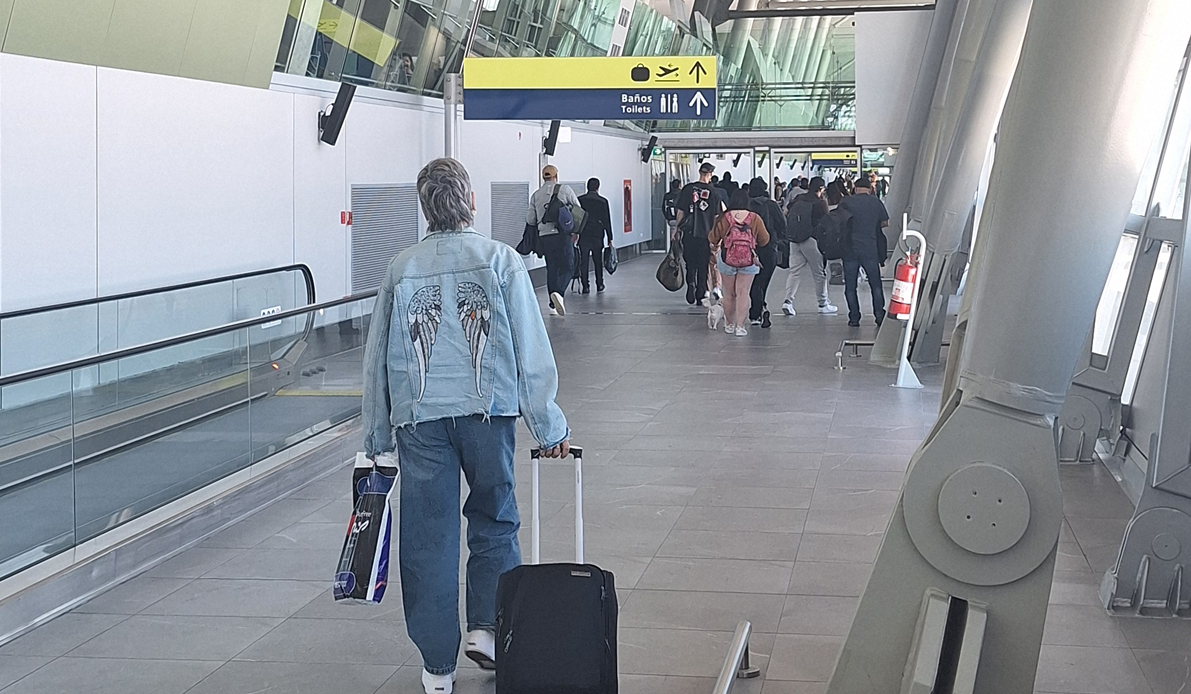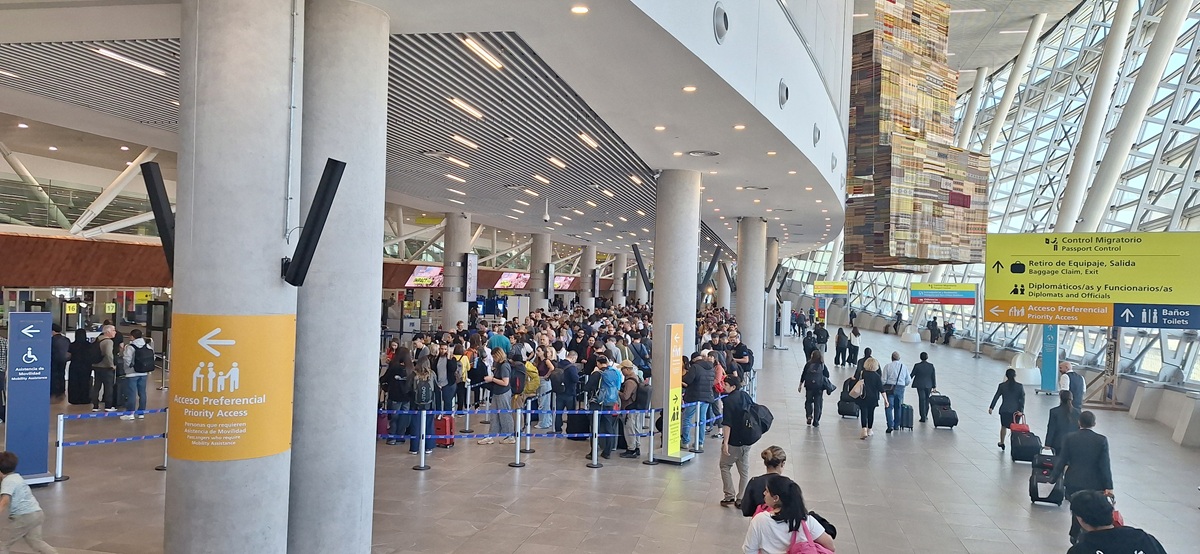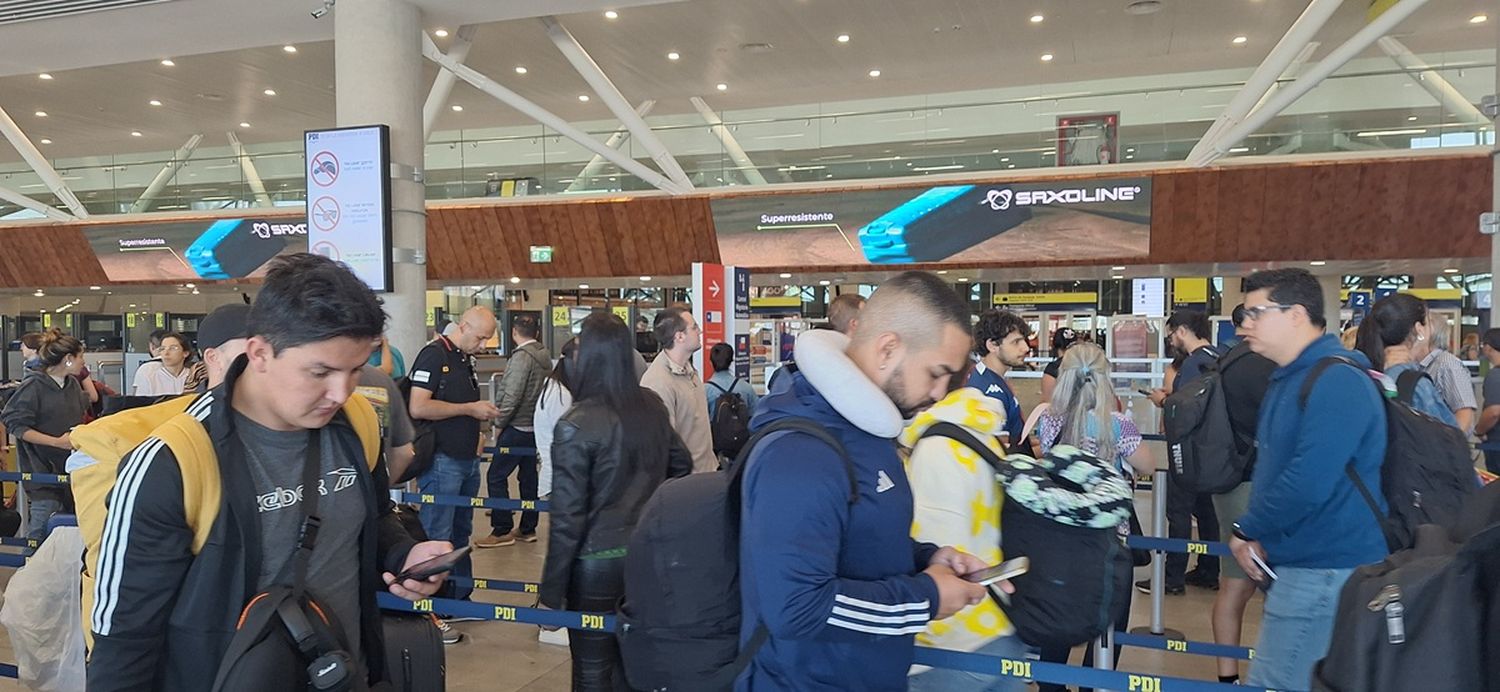Santiago Airport Immigration Delays: A Persistent Bottleneck Impacting Travelers
Arriving at the Comodoro Arturo Merino Benítez Airport in Santiago, Chile (SCL) is, at any time of the day, a nerve-wracking experience—not due to the infrastructure of the airport itself, but because of the bottleneck in the Immigration area.
Endless lines, drawn-out procedures, indifference, disdain, and a lack of willingness to expedite the process are common occurrences that only harm passengers and, by extension, tourism and the country’s economy.
I frequently travel to Santiago for work. On November 26, I arrived at the airport around noon after a two-hour flight. The walk from the plane to the Immigration area was smooth and fluid, but upon reaching the escalators leading to the control booths, the scene before me was a familiar one—something I had encountered many times over the years.

The line stretched almost to the base of the escalators, and the queues snaked back and forth four and a half times the length of the room, foreshadowing a long wait just to gain entry.
Movement was excessively slow, with only four booths open, and the time required for each passenger’s processing often seemed unnecessarily long.

Technology unused
Meanwhile, the 30 kiosks designated for Chilean residents, similar to those in Ezeiza or Aeroparque, were nearly empty. Only three people were using them.
I asked an official if there was an issue with the equipment, but he assured me that “all of them” were operational. Do Chileans not want to use them? Are they unaware of how to do so? Is the process too complicated? That doesn’t appear to be the case.
Chilean residents and citizens were opting to use the other four booths designated for them in their exclusive area. Naturally, processing Chileans is quicker than processing foreigners, who are often asked how long they plan to stay, where they’ll lodge, and the purpose of their visit, among other questions.
As a result, this section cleared faster than the one for foreigners. Forty minutes passed before a fifth booth was staffed, and another 15 minutes before a sixth became operational. This was still insufficient, as nearly an hour and a half had elapsed since my arrival, and there was still a significant group of people ahead of me.
Finally, someone had the bright idea to redirect part of the line to the Chilean residents’ area, which was now nearly empty. This alleviated the congestion, and the line quickly shortened, but the passengers had already been inconvenienced.
Common sense
I wonder how much simpler it would be if Chilean residents used the automated kiosks. This would free up resources to focus on foreigner processing and reduce wait times.
By the time I passed through Immigration, it had been an hour and 45 minutes since I arrived—almost as long as my flight.
Bottlenecks occur in airports worldwide, but the way the problem is addressed makes Merino Benítez unique and even frustrating.
The situation repeats itself during departure immigration, with the added risk of missing your flight if you don’t arrive at the airport early enough.
And that’s assuming exit checks are less rigorous than entry ones. During my departure on the 27th, the line for exit processing stretched to the entrance of the area, looping four times between the separator tapes.
The role of the PDI
The PDI (Investigative Police of Chile) is responsible for immigration checks, but their approach often leaves much to be desired in terms of efficiency. It seems the staff working at the airport are largely inexperienced or poorly trained.
This lack of experience hinders their ability to «read» passengers to identify irregularities that might require more thorough inspections. This inefficiency extends wait times for everyone, despite the number of people who have been waiting in line for ages.
The expectation isn’t for lax controls, but rather for efficient and swift ones—something that is far from impossible and is successfully implemented in other parts of the world, even at busier airports than Chile’s capital.
What’s most troubling and infuriating is the apparent disregard for passengers’ struggles and the absence of any clear effort to streamline processes without compromising security.
Crowds are common at all airports, but the way they are managed makes the difference. At Frankfurt Airport, for instance, bottlenecks can be even worse than in Chile, yet processing rarely takes more than 25–30 minutes. No one who has gone through Frankfurt would call the checks “light”—quite the opposite.
At Madrid’s Barajas Airport, signs display the maximum expected processing time, which is strictly adhered to. Additional staff are deployed during peak times to expedite the process. There’s no shortage of examples of efficiency, especially with advanced technology.
A recurring problem
This account might seem like a typical passenger’s complaint, but it has been the subject of serious criticism from other travelers, airlines, and tourism companies.
Recently, Peter Cerdá, Vice President for the Americas at the International Air Transport Association (IATA), raised the issue on his LinkedIn account.
Cerdá noted that lengthy queues and inefficiencies in both arrival and departure immigration processes occur daily, an issue authorities have failed to address, harming the travel experience, tourism, and the country’s image.
“It’s been seven months since my last post on this same issue, and travelers and airlines are fed up with the long wait times and frustrating congestion at Santiago’s Arturo Merino Benítez Airport. This is not a minor inconvenience but a failure that affects tourism, business travel, and Chile’s global reputation. While travelers wait in line for hours, who is taking responsibility?” Cerdá said.
This is not an isolated incident or a one-off occurrence during peak hours; it is a persistent problem at all times of the day. As Cerdá points out, it has been an issue for a long time, with no concrete action taken toward a definitive solution.


Para comentar, debés estar registradoPor favor, iniciá sesión